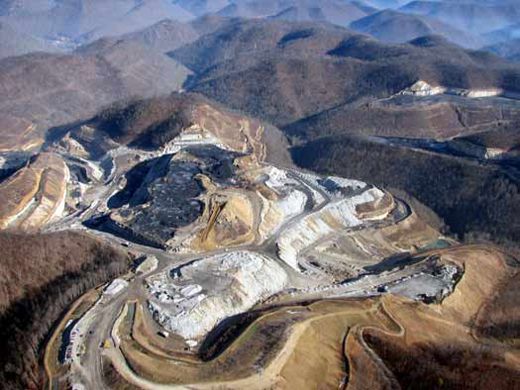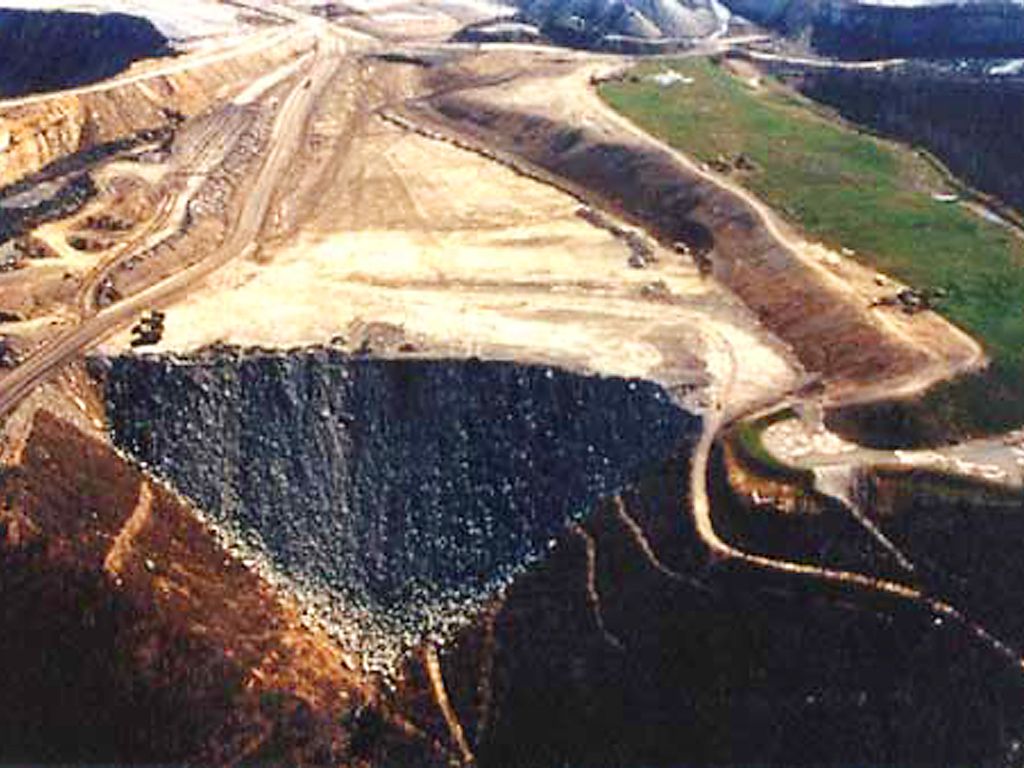
One of the most pressing issues of our time is how and where we are going to get sustainable energy for a global population with a rapidly rising standard of living and the consumption that this entails. Approximately 10% of United States coal production [coal in general accounts for 40% of global electricity production] is procured through mountaintop removal, an environmentally-devastating extraction that literally involves blasting off (or removing) the top of a mountain to extract the coal inside. The practice gained popularity in the 1960s, when it started becoming too difficult and too costly to extract coal from underground mines. In our continuing “It’s Not Easy Being Green” series, ScriptPhD.com’s eco-blogger Captain Planet talks about the documentary Mountaintop Removal, exactly what it entails, and why this process is so much more costly than the immediate energy gained from it. Please click “continue reading” for more.
“Take away wilderness and you take away the opportunity to be American.” –Roderick Nash, from ‘Wilderness and the American Mind’
If you were wondering where the sets for the land of Mordor were filmed for the Lord of the Rings trilogy, the answer would be New Zealand. But after viewing Mountaintop Removal, a well done, if homely, documentary currently in rotation on PBS and a film festival darling, the answer could just as easily have been a coal mining site in West Virginia.
So begins the story of Mountaintop Removal, with shaky aerial shots of mountains which, as you may have guessed by the name of the film, have had their tops removed. The resulting carnage of mountaintop removal is horrific in its environmental damage, toxic impact on human health, and permanent mutilation of a once-beautiful geography. As the film is quick to point out, you can cut down a forest, and eventually, it could grow back. But when you slice off the top of a mountain and extract all the coal inside, the mountain doesn’t grow back. Ever. What was once idyllic countryside in the Appalachian Mountains is quickly becoming a nightmare of epic proportions. To date, mountaintop removal has destroyed 1,000,000 acres in the Appalachian area.
The dirty secret behind goal is that it comprises 50% of the USA’s energy production. Burning coal is the cheapest way we know of to produce electricity, but it is also the most harmful in terms of the amount of carbon dioxide it produces, hastening the rise of the planet’s thermostat. Jeff Goodell, a coal specialist and author of Big Coal, says in the film that when he first started researching coal, he was surprised that we actually still use it today. He thought it had gone the way of the horse buggy and top hat. “I thought that electricity was just something that flowed down from a golden bowl in the sky. I never gave any thought to where it came from.”
So where does it come from, and how does mountaintop removal work, anyway? The organization Aurora Lights.org has an exceptional collection of information about mining, coal removal and alternative energy, and is a great resource for in-depth information. In essence, the practice of mountaintop removal is a five-part process. It begins with clearing, literally razing, burning and deforesting the trees to provide an unobstructed mining path:

The process continues with blasting, usually involving the use of dynamite to clear away earth and rock above the coal seams. This process in particular releases silica and chemical-ladden dust as airborne
particles to surrounding communities:

Next is the critical step of digging to clear rubble leftover from the blast and expose the coal seams directly for extraction and removal:

The rubble from the denuded mountains is dumped in the next step, called a valley fill, in which tons of rubble are relocated into the mountain’s valleys. This process has buried 1,900 miles of headwater streams (more on this below) and increased flooding during rainfall.

Finally, after all the coal has been mined, the barren mountainside is “replenished” reclamation, a largely superficial aesthetic process that involves planting of grass and plants, most of which will not ultimately be able to survive in the rocky ground.

If any or all of this sounds environmentally devastating, that’s because it is.
The Mountaintop Removal documentary highlights a coalition of concerned citizens who have organized to prevent further coal mining. They are comprised of college students, parents and environmentalists. The film introduces us a small elementary school in West Virginia with a coal mine in its backyard. The school sits next door to a “lake” full of coal slurry (akin to toxic sludge), which includes large volumes of lead, arsenic and cadmium. The children of the school have suffered increased rates of asthma, headaches and mouth sores, to name a few of the most common maladies. In a particularly effective scene, the parents of these school children march into the governor’s mansion unannounced and ask the Governor to relocate their children’s school to an area away from the coal mines.
The underlying issue of coal production is at the heart of our nation’s energy policy. As one interviewee so succinctly puts it in the film, we are at a crossroads where we must decide if we’re going to convert to sustainable,
green sources or continue pursuing non-renewable sources that pollute the environment and contribute to global warming. If you’ve been watching any television episodes on Hulu lately, you may have come across an advertisement for Coal River Wind. It’s a movement underway to install a fleet of wind turbines on the side of Coal River Mountain in West Virginia. It’s a race against time because Massey Energy (contact them today!), the lead coal company featured in Mountaintop Removal, has filed permits to remove the mountaintop which would destroy the wind potential. The Coal River Wind website urges visitors to write to the EPA, sign their petition and donate. It’s a microcosm of the country’s political will and long-term energy policy.
The most effective point that Mountaintop Removal ultimately makes is one of sustainability. Once the mountain ranges of Appalachia have been stripped of all coal, the coal companies will move on to other areas or dissolve. What they will leave in their wake will be broken economies, blighted landscapes and a host of health problems for anyone who is still living in the area, effectively turning the Appalachians into something like a modern-day dust bowl.
The scientific consensus on mountaintop coal mining is stunningly clear. Last month, an analysis of collected scientific studies concluded in the scholarly journal Science that mountaintop coal mining is deleterious to both the environment and human health and should be banned altogether. In all, this coal extraction process has filled 700 miles of US streams with debris, sludge and toxic pollution. Sadly, President Obama’s recent compromise with the Patriot Coal Company will steamroll [pardon the pun] a major mining project in West Virginia.
Mountaintop Removal trailer:
Websites that you can visit and organizations to get involved in to help stop mountaintop removal mining:
Coal River Mountain Watch
Ohio Valley Environmental Coalition
WV Highlands Conservancy
Mountain Justice Summer
Earthjustice
Photographer George Wuerthner has magnificently documented the ravages of mountaintop mining removal in Kentucky. The jarring mages are enough to implore you to get involved today.
CaptainPlanet is an LA-based, Northwestern University-educated eco-charged sustainability guru who loves film, psychology and saving the planet, one waterless urinal at a time…
~*CaptainPlanet*~
*******************
ScriptPhD.com covers science and technology in entertainment, media and advertising. Hire our consulting company for creative content development.
Follow us on Twitter and our Facebook fan page. Subscribe to free email notifications of new posts on our home page.